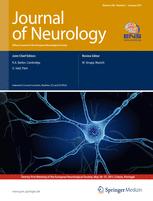 The long-term efficacy of prednisolone (PSL) therapy for prolonging ambulation in Japanese patients with genetically confirmed Duchenne muscular dystrophy (DMD) was evaluated in this study. Clinical trials have shown a short-term positive effect of high-dose and daily PSL on ambulation, whereas a few studies have shown a long-term effect. “Real-life” observation is particularly lacking in Japan. The national registry of muscular dystrophy in Japan was used for this retrospective study. The age at loss of ambulation (LOA) was compared between patients in the ‘PSL’ group and those in the ‘without-PSL’ group. From July 2009 to June 2012, 791 of 560 patients from the Remudy DMD/BMD registry were matched with inclusion criteria. Of the 560, all were genetically confirmed DMD patients, 245 (43.8 %) of whom were treated with PSL and 315 (56.2 %) without PSL. There was no difference between the two groups regarding their mutational profile. The age at LOA was significantly greater (11 month on average) in the PSL group than in the without-PSL group (median, 132 vs. 121 months; p = 0.0002). Although strictly controlled clinical trials have shown that corticosteroid therapies achieved a marked improvement in ambulation, discontinuation of the drug due to intolerable side effects led to exclusion of clinical trial participants, which is considered as unavoidable. In this study, patients were not excluded from the PSL group, even if they discontinued the medication shortly after starting it. The results of this study may provide evidence to formulate recommendations and provide a basis for realistic expectations for PSL treatment of DMD patients in Japan, even if there are certain limitations due to the retrospective nature of the study.
The long-term efficacy of prednisolone (PSL) therapy for prolonging ambulation in Japanese patients with genetically confirmed Duchenne muscular dystrophy (DMD) was evaluated in this study. Clinical trials have shown a short-term positive effect of high-dose and daily PSL on ambulation, whereas a few studies have shown a long-term effect. “Real-life” observation is particularly lacking in Japan. The national registry of muscular dystrophy in Japan was used for this retrospective study. The age at loss of ambulation (LOA) was compared between patients in the ‘PSL’ group and those in the ‘without-PSL’ group. From July 2009 to June 2012, 791 of 560 patients from the Remudy DMD/BMD registry were matched with inclusion criteria. Of the 560, all were genetically confirmed DMD patients, 245 (43.8 %) of whom were treated with PSL and 315 (56.2 %) without PSL. There was no difference between the two groups regarding their mutational profile. The age at LOA was significantly greater (11 month on average) in the PSL group than in the without-PSL group (median, 132 vs. 121 months; p = 0.0002). Although strictly controlled clinical trials have shown that corticosteroid therapies achieved a marked improvement in ambulation, discontinuation of the drug due to intolerable side effects led to exclusion of clinical trial participants, which is considered as unavoidable. In this study, patients were not excluded from the PSL group, even if they discontinued the medication shortly after starting it. The results of this study may provide evidence to formulate recommendations and provide a basis for realistic expectations for PSL treatment of DMD patients in Japan, even if there are certain limitations due to the retrospective nature of the study.
